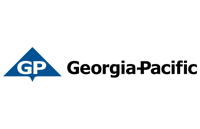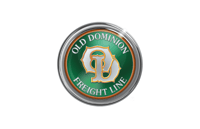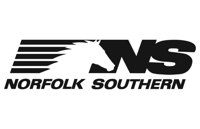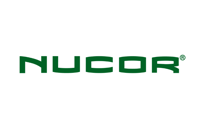Unlock The Power of Kubernetes
Get help from our experienced team of Kubernetes experts.

Kubernetes Challenges, Solved
What Challenges Are You Dealing With?
Kubernetes Management
Kubernetes is a powerful container orchestration platform, but it can be challenging to manage at scale. Some of the top challenges include complexity, security, scalability, and monitoring and troubleshooting. There are a number of solutions to these challenges, such as using a managed Kubernetes service, automation, and monitoring and alerting tools. By following these tips, you can help to ensure that your Kubernetes clusters are managed effectively and that they are available when you need them.
Kubernetes Migration
Migrating existing applications and infrastructure to Kubernetes requires careful planning and coordination, as well as a deep understanding of the system. It involves rearchitecting and rewriting applications to conform to Kubernetes standards and best practices, which can be time-consuming and resource-intensive.
Additionally, migrating large-scale systems to Kubernetes requires careful consideration of performance, scalability, and security implications. The process also involves training and upskilling teams to effectively manage and operate Kubernetes clusters. Overall, while Kubernetes offers numerous benefits for containerized applications, its migration can present significant challenges that require careful planning and execution.
Kubernetes Backup and Storage
Kubernetes is designed to run containerized applications across multiple nodes, and ensuring data persistence and backup can be challenging. The dynamic nature of containers and the constantly changing state of the cluster make it difficult to create consistent backups.
Additionally, the scale and volume of data generated by containerized applications can strain storage systems. Ensuring data integrity and availability while maintaining performance can be a delicate balance. Implementing effective backup and storage solutions requires careful planning, robust infrastructure, and the use of specialized tools and technologies designed specifically for Kubernetes environments.
Kubernetes Disaster Recovery
In the event of a disaster, such as a node failure or network outage, recovering the entire Kubernetes environment and the applications running on it can be a complex and time-consuming process. It requires ensuring data consistency, restoring configurations, and re-establishing connectivity between nodes.
Additionally, as Kubernetes is constantly evolving with updates and new features, ensuring compatibility and proper functioning during disaster recovery adds another layer of complexity. Overall, the challenge lies in effectively managing the intricate infrastructure of Kubernetes and its components to ensure seamless recovery in the face of disasters.
Kubernetes CI/CD
Implementing CI/CD pipelines in a Kubernetes environment requires careful planning and coordination. This is because Kubernetes introduces additional complexities, such as managing multiple containers, coordinating deployments across clusters, and ensuring proper version control. Additionally, integrating CI/CD tools with Kubernetes can be challenging, as it requires integration with container registry systems, image scanning tools, and deployment automation tools. Overall, the complexity of Kubernetes and the need for seamless integration with various tools make CI/CD implementation in a Kubernetes environment a challenge that requires expertise and careful consideration.
Kubernetes Monitoring
As containers are constantly being created, updated, and destroyed, it becomes difficult to keep track of all the resources and ensure they are functioning properly. Additionally, Kubernetes clusters can scale up or down based on demand, making it challenging to monitor the performance and health of the system.
Furthermore, the distributed nature of Kubernetes adds another layer of complexity, as monitoring data needs to be collected from multiple nodes and aggregated for analysis. Overall, Kubernetes monitoring requires specialized tools and strategies to effectively monitor and troubleshoot issues in this dynamic and scalable environment.
Kubernetes Logging
In a Kubernetes cluster, there are multiple nodes and containers running simultaneously, making it difficult to track and collect logs from all the different sources. Additionally, as containers are ephemeral and can be created and destroyed rapidly, it can be challenging to capture logs before they are lost.
Furthermore, as Kubernetes scales dynamically based on workload demands, managing and organizing logs from multiple nodes and containers becomes complex. To overcome these challenges, specialized logging solutions and tools are often required to centralize and aggregate logs from Kubernetes clusters for effective monitoring and troubleshooting.
Kubernetes Security
With its distributed nature and numerous components, there are multiple entry points for potential security breaches. The dynamic nature of Kubernetes, with containers constantly being created and destroyed, makes it difficult to maintain a consistent security posture. Ensuring the security of the different layers, from the cluster infrastructure to the container workloads, requires a deep understanding of Kubernetes architecture and best practices. Implementing strong authentication and access control measures, monitoring for vulnerabilities and unauthorized access, and regularly updating and patching the Kubernetes environment are all crucial for maintaining a secure Kubernetes deployment.
Kubernetes Intrusion Detection
This dynamic nature of Kubernetes makes it difficult to define a fixed set of rules or signatures for detecting intrusions. Additionally, the distributed and decentralized architecture of Kubernetes adds another layer of complexity to intrusion detection. The large number of components and interactions within a Kubernetes cluster makes it challenging to monitor and analyze network traffic for potential threats. Furthermore, the high level of automation and orchestration in Kubernetes can make it difficult to differentiate between legitimate and malicious activities. Overall, the unique characteristics of Kubernetes pose significant challenges for intrusion detection, requiring advanced techniques and strategies to effectively secure the environment.
Kubernetes Cloud
Kubernetes is designed to manage and orchestrate containerized applications, but when deployed in a cloud environment, there are additional complexities to consider, such as provisioning and managing cloud resources, integrating with cloud services, and ensuring high availability and scalability. Another challenge is ensuring security and compliance in the cloud. With multiple tenants and shared infrastructure, it is crucial to implement robust security measures and adhere to industry regulations. Additionally, integrating Kubernetes with existing cloud infrastructure and tools can be challenging, as it requires careful planning and coordination. Overall, deploying and managing Kubernetes in the cloud requires expertise and careful consideration of the unique challenges posed by the cloud environment.
What You’ll Achieve By Working With Us
Assess Your Current Situation: Our consultants use eight proprietary frameworks to assess your environment: Architecture, Applications, Storage & Backup, Scalability, Disaster Recovery, CI/CD, Monitoring, and Security. If you are uncertain about where to start, don’t know the proven path to follow, or lack Kubernetes expertise, we can help you assess who needs to do what.
Deploy Recommended Platforms: Our experienced engineers can help you design, implement, and configure a Kubernetes-based application platform (Red Hat OpenShift, SUSE Rancher, AWS EKS, Azure AKS, Google GKE). If your team lacks the bandwidth, skills, or experience, don’t leave this to chance. Let us guide you or do it for you.
Migrate Applications: Our Kubernetes developers can help you migrate or modernize your applications. If your developers are unfamiliar with infrastructure as code, we can help you leverage your Kubernetes environment to rapidly deploy applications.
Troubleshoot Problems: Our DevOps engineers can help you proactively troubleshoot and fix recurring problems by providing the tools, processes, and support you need.
Train Your People: Our Kubernetes Academy provides on-demand training in Kubernetes 101 and how to conduct a Health Assessment. If you need an unbiased point of view on Kubernetes best practices, we can help you and your team grow their capabilities.
Clients Love Us











“Shadow-Soft has a fantastic reputation in the open-source community. Shadow-Soft’s work was foundational to what we’ve done architecturally since. As we continue to do test, probe and analyze the solution, Shadow-Soft’s recommendations help to keep us on track.”
– Josh Bregman, VP of Technology at CyGlass
Our Engagements Start With An Assessment
Our work usually starts by assessing a client's existing software, processes, and skills. We then work with them to deploy new software, introduce new processes, migrate applications, and train their team.
Unlock the Power of Kubernetes
This guide provides an introduction to containers and Kubernetes, the open-source container orchestration system. It covers core concepts, roles, responsibilities, and design paradigms used in container orchestration environments. Discover real-world situational examples and use cases to help readers avoid common pitfalls and set themselves up for long-term success.
Who should read this guide?
This guide is for software developers, system administrators, and DevOps engineers who want to learn about containers and Kubernetes. It is also a good resource for anyone who wants to understand the fundamentals of container orchestration.
What will you learn?
- Understand the basics of containers and Kubernetes
- Identify the different roles and responsibilities in a container orchestration environment
- Design and deploy containerized applications
- Manage and troubleshoot containerized applications
Get started today!
